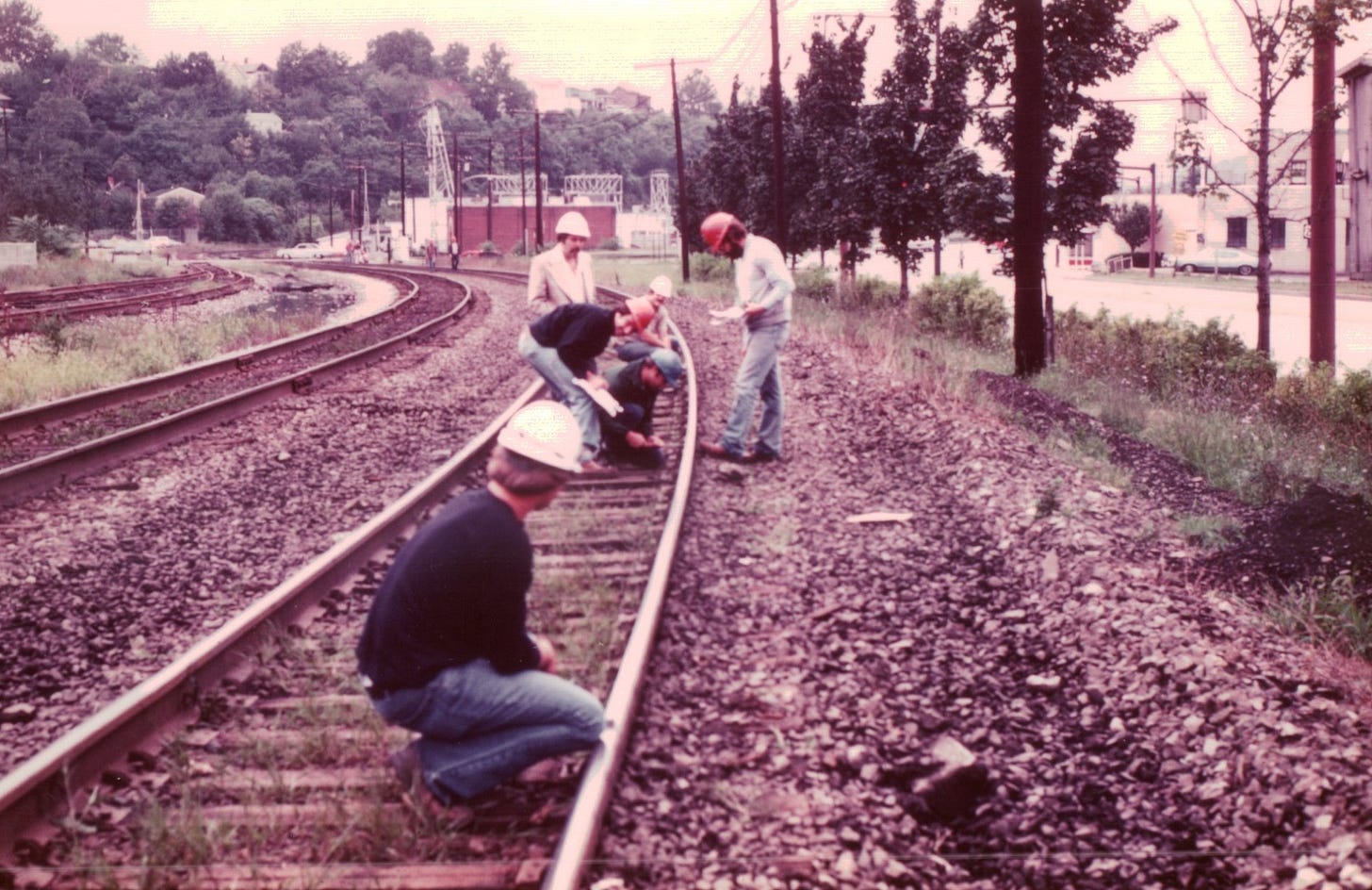Battle of the Gauges
The goal of this post: debunk the urban legends surrounding railroad track gage.
The goal of this post: debunk the urban legends surrounding railroad track gage.
The predominant or standard railroad track gauge throughout the world is 4'8½"(1435 mm). There is no critical reason for the chosen standard gauge. Instead, it occurred as an evolutionary process beginning in Britain with the predominant horse-drawn cart guideway dimension in use before the Industrial Revolution. Historical documents show one of two reasons for the original choice of standard gauge:
Early railroad builders chose the measurement of chariot wheel grooves in ancient Rome. The ruts or grooves cut into the pathways by the chariots and carts supply a gauge measurement of less than 4'9". The builders of the precursor to a practical railroad used a guided beam system and chose the predominant gauge - 4'8". With the introduction of a flanged wheel and rail system, engineers increased the gauge ½" to reduce friction.
The “L” shape of the first iron rail supplied a guide for the wheels of the horse-drawn carriages. That changed in 1789 with the introduction of the cast iron edge-rail and the flanged wheel. Measured from the outside of the rails, 5'0" constituted the predominant gauge. Later, railroads made wheels with flanges on the inside. The same 5'0" gauge then became 4'8½" due to the deduction of 1¾" width from each rail.
The rail/wheel interface played a significant historical role in developing the standard track gauge. For North American common carrier railroads, the nominal gauge contact point between the rail and wheel is ⅝" below the top of the rail. This point of reference is the same for wheel gauge. The difference between rail and wheel gauge of 15/16" induces a steering effect for wheels moving through curves.
Standard track gauge can deviate slightly as-built due to allowances for materials manufacturing and construction imperfections. Railroads have maintenance standards that address the expected wear of track materials that causes wide gauge. For common carrier railroads In the United States, Title 49 of the Federal Code of Regulations, Part 213 (Track Safety Standards), prescribes the largest allowable gauge. With excessive wide gauge, the track loses its ability to keep a wheel assembly (truck) in line with the track. This increases wheel climb dynamics, rail rollover forces, or lets wheels drop between the rails.
For history and railroad engineering aficionados, below is a technical paper about the topic at hand. Written by Your Author, this paper reviews the historical element of the worldwide industrial revolution riddled with legends and speculation — railroad track gauge. Topics include North American developments, engineering practices, track gauge safety limits, and rail-wheel considerations. Enjoy.
Fun Time Addendum
In 1886, railroads in the South converted about 11,500 miles of track: The Day The Gauge Changed
A curious story of a railroad worker with the name “Gage:” Why Scientists Are Still Fascinated By Phineas Gage
Cogent author and publisher, Frederick R. Smith






Railway gauges dot not evolve from chariot wheels
https://youtu.be/zrq2_koM1zg?si=KX0wso1dyeJIihUd